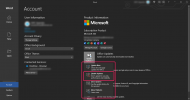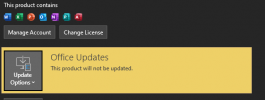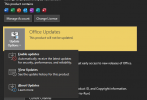Is there a way for individual account holders of Office 365 to also change to the semi-annual update scheme?
Maybe...
M365 Personal users are no different than professional ones aside from a few entitlement differences. The problem is, the login you use to get at your personal M365 subscriptions is a part of Microsoft's tenant... and that tenant is where the update controls are located. For obvious reasons no one outside of Microsoft can get at those settings... so the "easy" path is out.
There is however this:
https://docs.microsoft.com/en-us/deployoffice/change-update-channels
Group Policy isn't available outside of the Professional level OS...
Which brings us to the Office Deployment Tool... This used to be the only way to make this change in Office... assuming it still works you can try that. I question this however because the Organization Wide setting exists, and is known to override what the ODT configures.
The configuration XML can be generated by visiting
https://config.office.com, Once there click the create configuration button that's all but buried at the bottom. You don't have to login or anything, just click the button. The Office Suite is Microsoft 365 Apps for Business. The Update Channel selector gets put to what you want that to be.
Once that's done and you have your XML file, you'll need to go here:
https://www.microsoft.com/en-us/download/details.aspx?id=49117 To get the ODT tool itself. Stick the exe file in the same folder as the xml file, and run this:
Code:
setup.exe /configure config.xml
Assuming you named your xml file config.xml anyway... change that accordingly.
This will reinstall office with the above settings, and I
think you can use the home / personal logins with it. But I haven't tried it personally... so I don't know if it'll work. And MS has a huge track record of making Home users the test bed for their commercial clients. So it wouldn't shock me if this solution flat doesn't work, or stops working periodically.
Another path that's less ideal... is to disable Office Updates. You can do this in any Office app, File -> Account -> Office Updates tile. Do not do this if Outlook is in play unless you want a bad time... Disabled updates will need to be enabled again at least twice a year to keep the platform functional.



